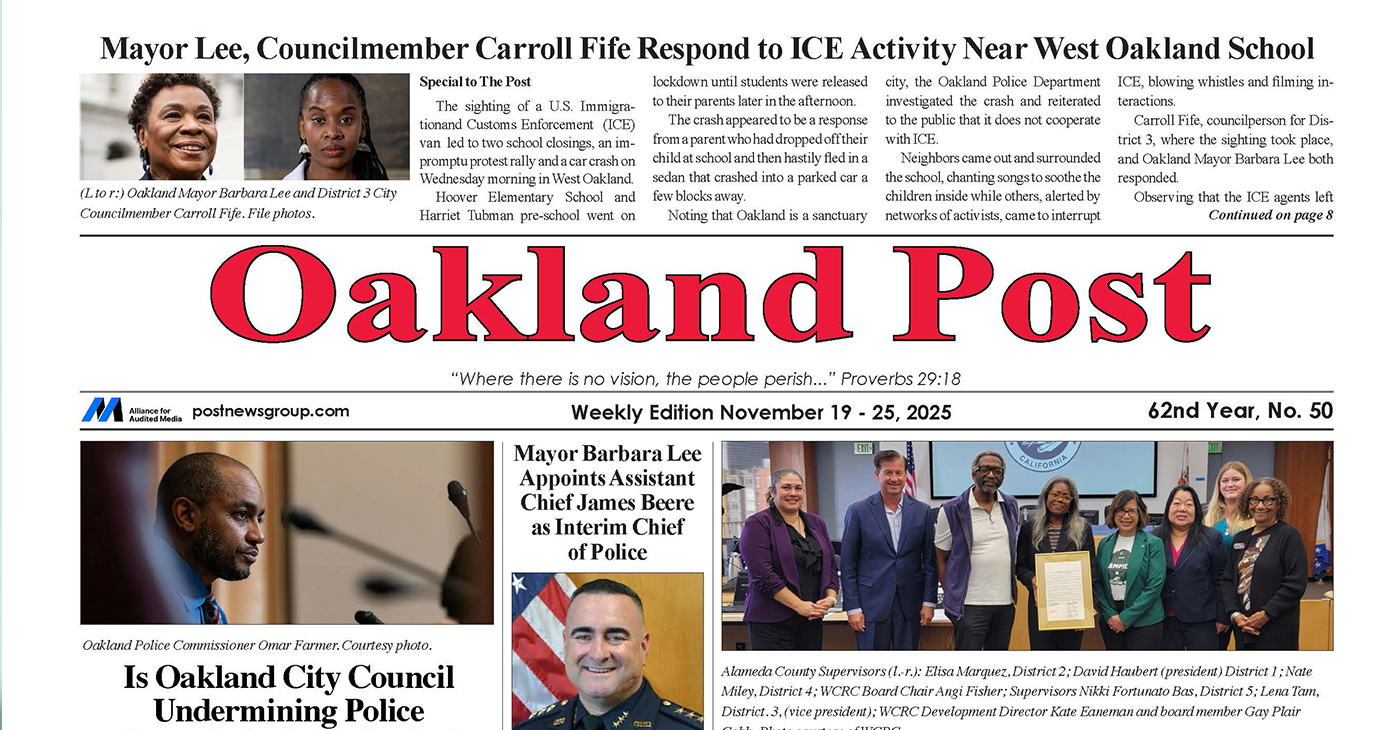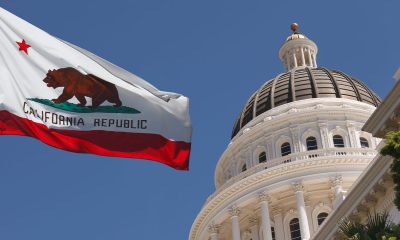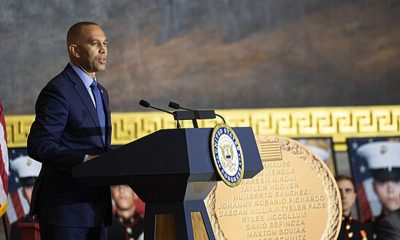Business
Revised Sir Francis Drake Blvd. Lighting Moves Forward
The completed $18 million Upgrade the Drake project was the most significant improvement effort in 25 years for Drake Boulevard between Highway 101 and the Town of Ross. In addition to repairing and paving the heavily used 2.2-mile stretch of roadway and implementing improvements such as revised lane configurations and drainage, the work also included numerous safety upgrades and long-term underground utility updates.

Dimmer light fixtures and decorative poles planned due to community feedback
Courtesy of Marin County
The Marin County Department of Public Works (DPW) is in the process of revising the street lighting along Sir Francis Drake Boulevard between the Town of Ross and Highway 101. The lighting update project would address the enhanced street lighting that was installed during the Upgrade the Drake project, which was completed in November 2021.
In response to community concerns, the proposed lighting project is intended to reduce light dispersal on adjacent properties, decrease light intensity and improve aesthetics while still maintaining the lighting uniformity levels necessary for public safety along Drake Boulevard. Statistically, uniform nighttime street lighting improves safety for all modes of transportation.
The Marin County Board of Supervisors will consider approving the project to replace median light poles between Eliseo Drive and Manor Road at the April 19 public meeting at the Marin County Civic Center, 3501 Civic Center Drive, Suite 330, in San Rafael. The Board will consider moving forward with purchasing decorative light poles, which would cost an estimated $300,000, as well as putting the construction contract out to bid for the lighting update installation project.
To keep the cost as low as possible, the decorative poles would be ordered directly from the distributor and DPW plans to reuse the pole foundations already installed wherever possible. The streetlight revisions are being funded by the remaining budget of the Upgrade the Drake project and the Marin County Street Light Fund. To further offset the cost, DPW plans to explore resell opportunities for the currently installed street light poles, which are a standard pole design used across California.
The new median lighting would replace light poles and fixtures along approximately one third of the 2.2-mile corridor with shorter, decorative poles and dimmer fixtures. It should be noted that the shorter, decorative poles with the dimmer fixtures will require closer spacing to achieve sufficient light levels and uniformity on the roadway, resulting in a net increase in total lights.
The proposed pole replacements are expected to begin construction before the end of 2022, but the timing hinges on when the new decorative poles are available. The poles require significant manufacturing lead time, taking approximately six months to be fabricated and delivered. Pending the Board decision at the April 19 meeting, moving forward with placing the pole order in advance of awarding a construction contract will help expedite the potential future project.
In January 2022, DPW replaced lighting fixtures at intersections and added backshields to help block light dispersal outside of the roadway and sidewalks. In June, the County will replace all of the remaining light fixtures on existing poles throughout the 2.2-mile corridor. The existing fixtures have a brightness of 12,000 lumens and the replacement fixtures will typically have brightness of 5,000 to 8,000 lumens. Additional backshields will be added to reduce light dispersal outside the roadway when appropriate.
The completed $18 million Upgrade the Drake project was the most significant improvement effort in 25 years for Drake Boulevard between Highway 101 and the Town of Ross. In addition to repairing and paving the heavily used 2.2-mile stretch of roadway and implementing improvements such as revised lane configurations and drainage, the work also included numerous safety upgrades and long-term underground utility updates.
In response to the community reaction in February 2021, when the lighting improvements constructed during the Upgrade the Drake project were initially illuminated, DPW turned off the new median street lighting and began the process of reevaluating the design. Lights at the eight intersections along the project corridor have remained illuminated for safety reasons.
Community members interested in learning more about the proposed lighting project, as well as the separate landscaping project along the corridor, can find the information on DPW’s projects webpage.
Alameda County
Seth Curry Makes Impressive Debut with the Golden State Warriors
Seth looked comfortable in his new uniform, seamlessly fitting into the Warriors’ offensive and defensive system. He finished the night with an impressive 14 points, becoming one of the team’s top scorers for the game. Seth’s points came in a variety of ways – floaters, spot-up three-pointers, mid-range jumpers, and a handful of aggressive drives that kept the Oklahoma City Thunder defense on its heels.

By Y’Anad Burrell
Tuesday night was anything but ordinary for fans in San Francisco as Seth Curry made his highly anticipated debut as a new member of the Golden State Warriors. Seth didn’t disappoint, delivering a performance that not only showcased his scoring ability but also demonstrated his added value to the team.
At 35, the 12-year NBA veteran on Monday signed a contract to play with the Warriors for the rest of the season.
Seth looked comfortable in his new uniform, seamlessly fitting into the Warriors’ offensive and defensive system. He finished the night with an impressive 14 points, becoming one of the team’s top scorers for the game. Seth’s points came in a variety of ways – floaters, spot-up three-pointers, mid-range jumpers, and a handful of aggressive drives that kept the Oklahoma City Thunder defense on its heels.
One of the most memorable moments of the evening came before Seth even scored his first points. As he checked into the game, the Chase Center erupted into applause, with fans rising to their feet to give the newest Warrior a standing ovation.
The crowd’s reaction was a testament not only to Seth’s reputation as a sharpshooter but also to the excitement he brings to the Warriors. It was clear that fans quickly embraced Seth as one of their own, eager to see what he could bring to the team’s championship aspirations.
Warriors’ superstar Steph Curry – Seth’s brother – did not play due to an injury. One could only imagine what it would be like if the Curry brothers were on the court together. Magic in the making.
Seth’s debut proved to be a turning point for the Warriors. Not only did he contribute on the scoreboard, but he also brought a sense of confidence and composure to the floor.
While their loss last night, OKC 124 – GSW 112, Seth’s impact was a game-changer and there’s more yet to come. Beyond statistics, it was clear that Seth’s presence elevated the team’s performance, giving the Warriors a new force as they look to make a deep playoff run.
Activism
Oakland Post: Week of November 26 – December 2, 2025
The printed Weekly Edition of the Oakland Post: Week of November 26 – December 2, 2025

To enlarge your view of this issue, use the slider, magnifying glass icon or full page icon in the lower right corner of the browser window.
Activism
Oakland Post: Week of November 19 – 25, 2025
The printed Weekly Edition of the Oakland Post: Week of November 19 – 25, 2025

To enlarge your view of this issue, use the slider, magnifying glass icon or full page icon in the lower right corner of the browser window.
-

 Activism3 weeks ago
Activism3 weeks agoOakland Post: Week of November 12 – 18, 2025
-

 Activism3 weeks ago
Activism3 weeks agoIN MEMORIAM: William ‘Bill’ Patterson, 94
-

 Activism3 weeks ago
Activism3 weeks agoHow Charles R. Drew University Navigated More Than $20 Million in Fed Cuts – Still Prioritizing Students and Community Health
-

 Bay Area3 weeks ago
Bay Area3 weeks agoNo Justice in the Justice System
-

 #NNPA BlackPress3 weeks ago
#NNPA BlackPress3 weeks agoThe Perfumed Hand of Hypocrisy: Trump Hosted Former Terror Suspect While America Condemns a Muslim Mayor
-

 #NNPA BlackPress2 weeks ago
#NNPA BlackPress2 weeks agoTrump’s Death Threat Rhetoric Sends Nation into Crisis
-

 #NNPA BlackPress4 weeks ago
#NNPA BlackPress4 weeks agoProtecting Pedophiles: The GOP’s Warped Crusade Against Its Own Lies
-

 #NNPA BlackPress2 weeks ago
#NNPA BlackPress2 weeks agoLewis Hamilton set to start LAST in Saturday Night’s Las Vegas Grand Prix


























































